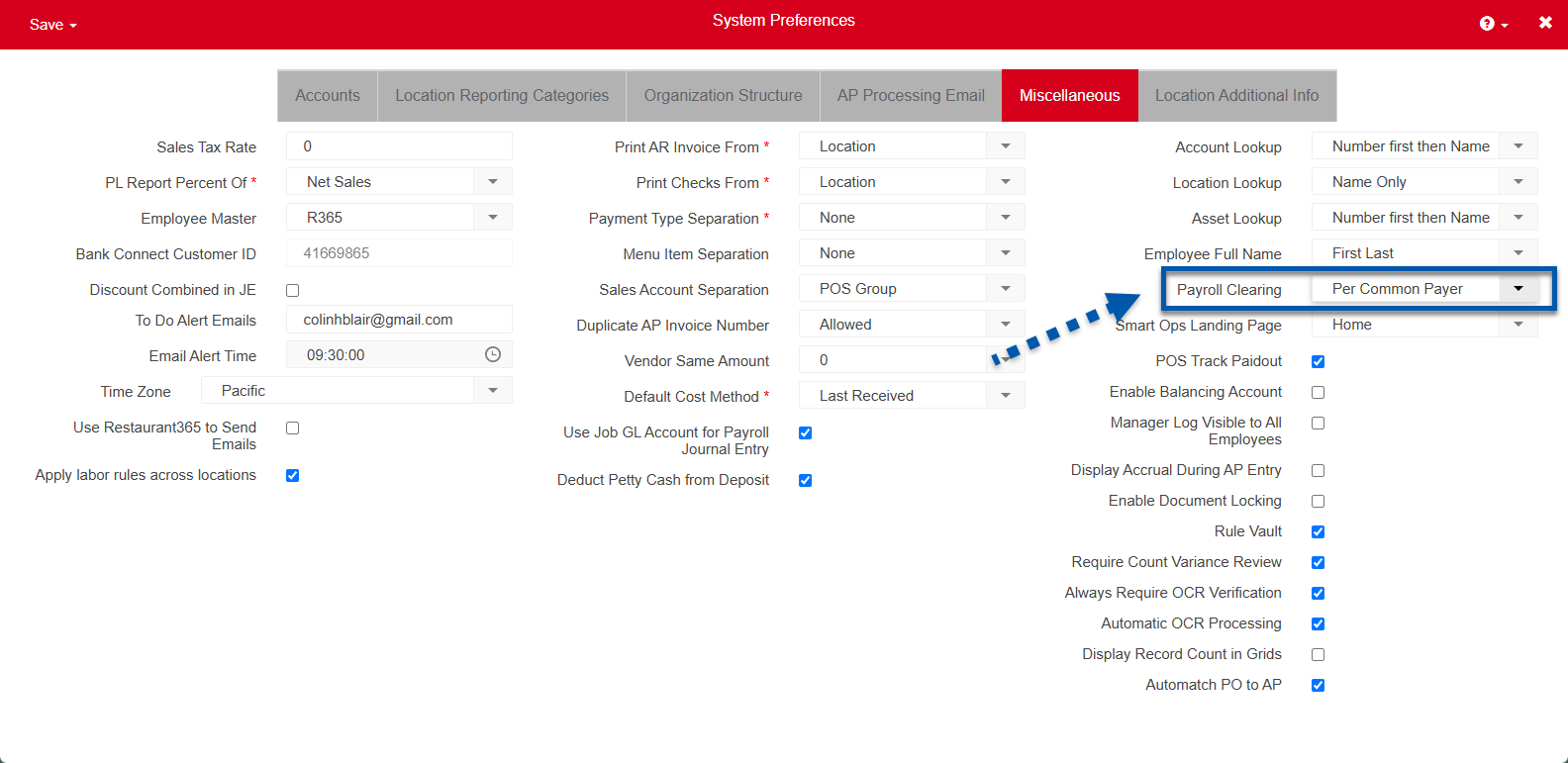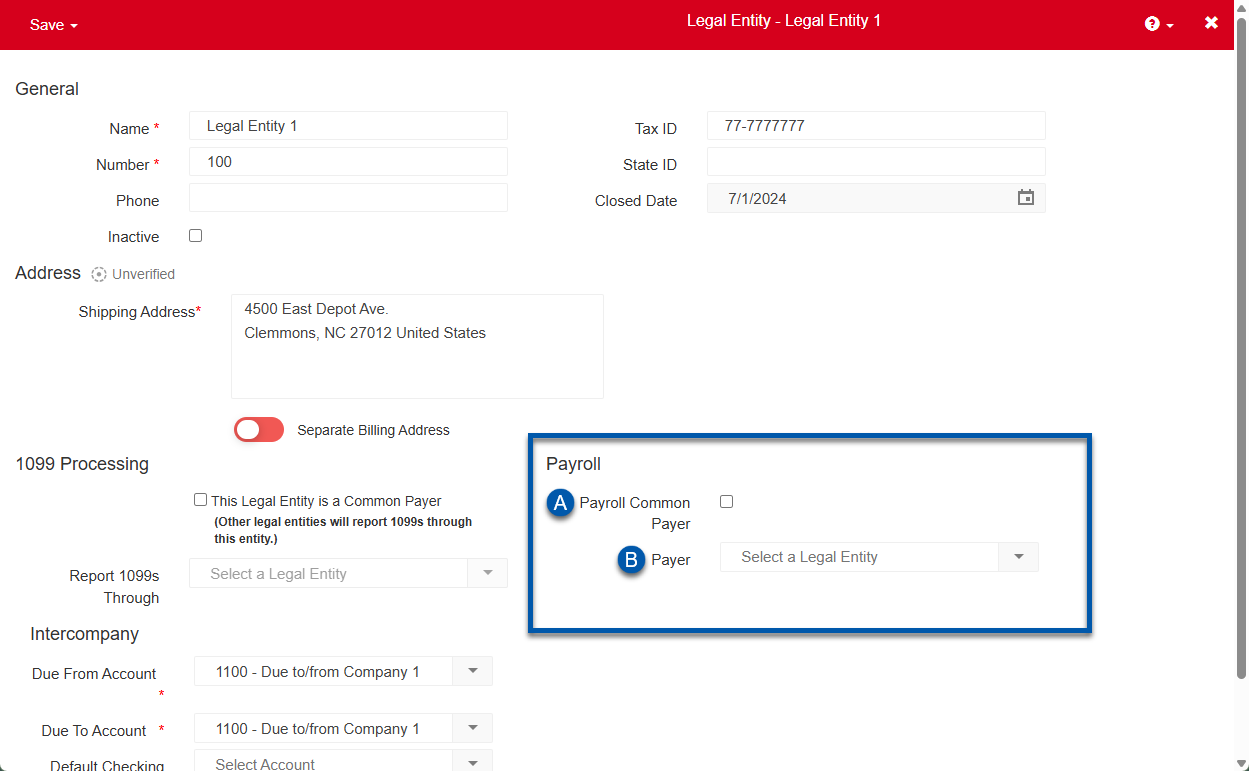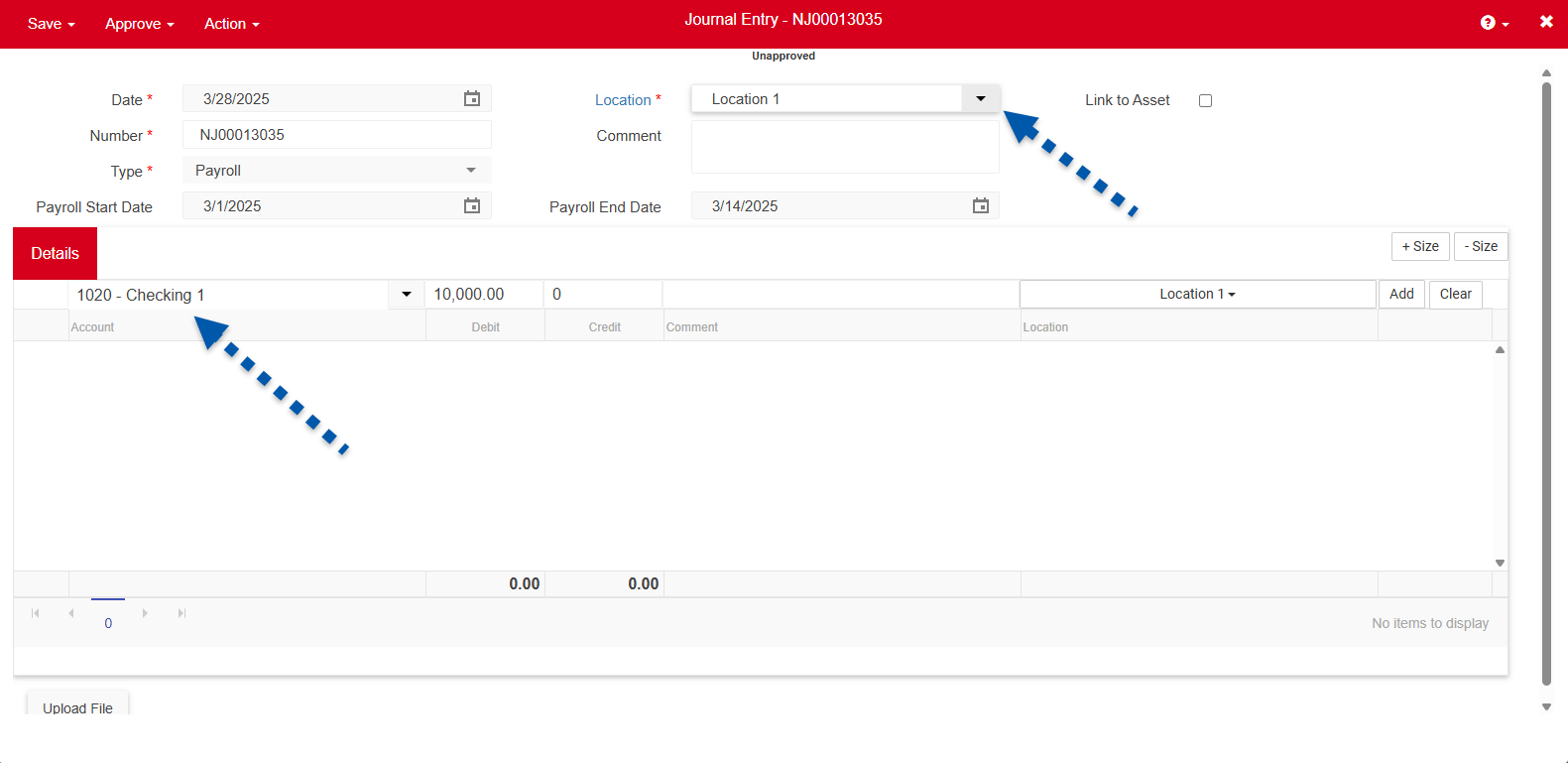A Legal Entity can be set as a Payroll Common Payer for one or more Legal Entities on the Legal Entity record. A Payroll Common Payer is a legal entity that issues payroll on behalf of one or more other legal entities within the organization. When Child Legal Entities are set under the Payroll Common Payer, or the Parent Legal Entity, then Payroll will be cleared for each Child Legal Entity's Locations through its Payroll Common Payer.
Learn more about Payroll Common Payer for Workforce here.
Prerequisites
To set up a Payroll Common Payer, ensure to complete the following prerequisite steps.
Click steps to expand for additional information and images.
Step 1: On the miscellaneous tab of the System Preferences page, set the 'Payroll Clearing' option to per common payer.

Step 2: Update the legal entity records to set the common payer relationship.
Payroll Common Payer - Select the Payroll Common Payer checkbox for any legal entity that acts as the paying entity for other legal entities. If the legal entity processes payroll for more than just its own employees, it is considered a common payer.
When selected, the payer dropdown is not available for selection.
Payer - For legal entities whose payroll is processed by another legal entity, use the Payer dropdown to select the entity that issues their payroll.
Only legal entities designated as Payroll Common Payers will be available for selection.

For organizations with R365 Workforce: Changes to common payer settings after employees are onboarded can cause payroll and accounting disruptions. Only make changes when absolutely necessary.
Recording Payroll
When recording the payroll journal entry—either manually or by import—the header location and the debited GL account (typically the bank account) must belong to the Payroll Common Payer legal entity. Once selected, the Payroll Estimate Clearing tab will display all locations associated with the legal entities that are paid by the selected common payer.

If a legacy Payroll Journal Entry needs to have its Location updated to a Child Legal Entity, temporarily deactivate the feature to make the change.